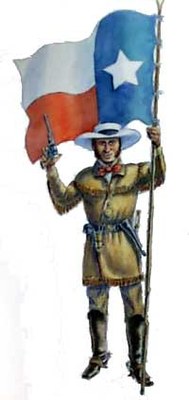Gulf Coast History


Native Americans lived in the Gulf Coast region of Texas for thousands of years. They lived together in small groups of about 25-50 people. Each group had their own name and clothing styles and spoke slightly different languages. Today, we know that most of these Native Americans belonged to one of two cultures: the Atakapa or the Karankawa. The Atakapas lived in the northern part of the coast. The Karankawas lived on the southern part of the coast. Both Atakapas and Karankawas hunted ducks and geese and ate turtles. They moved around the countryside at different times of the year to live and find food. For instance, in the spring and summer, the Karankawa moved away from the coast to hunt deer and harvest pecans. In the fall and winter, they lived on the coast and ate oysters, fish and roots.

Over 450 years ago, several Spanish boats were shipwrecked on the Gulf Coast. It was the wintertime, and many of the Spanish sailors died. Some of them survived because they met the Karankawa Indians and lived with them for many years. These survivors were the first non-Indians that we know of to explore the Texas coast on land. Eventually, they left the Karankawa and traveled across Texas and Mexico to find other Spaniards. Cabeza de Vaca was one of the survivors, and he wrote a famous book about their life in Texas.
In 1685, French explorers came to the Gulf Coast region. The Spanish and the French both wanted to live there, but they were enemies.

A Frenchman named La Salle (la-sal) explored the area with many other people. He and his companions built a small settlement called Fort St. Louis. It was destroyed. Several of the survivors went to live with the local Indian groups. A group of Spanish soldiers began looking for the ruins of Fort St. Louis after they captured one of the survivors. When they finally found it, they were very sad for the people who had died there. After Fort St. Louis was destroyed, the Spanish built missions and forts in the Gulf Coast Region to keep the French out. Fort St. Louis’ location was forgotten for a long time, but archaeologists found it again and are investigating the remains to learn more about this site.

In 1836, Texans and Mexicans fought an important battle in the Gulf Coast region during the Texas War for Independence from Mexico.
The battle was fought at San Jacinto, near what is now Houston. The Texans won the battle and the Mexicans surrendered. Afterwards, Texas became independent from Mexico. The battleground where they fought is now the San Jacinto State Historical Park near La Porte. A monument was put up in the park to remind visitors of how important the battle was. On the other side of the park, the Battleship Texas is anchored in Buffalo Bayou. It is the only surviving Navy ship to have served in both World War I and II.